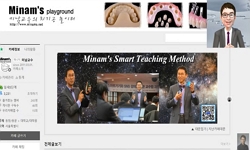본고는 갑오개혁기부터 일제의 침략이 본격화된 통감부시기까지 국가 제사의 변화를 살펴보는 것이다. 1894년 갑오개혁시기에, 국가제사의 일들은 궁내부에 귀속되었고, 그래서 국가제사는 ...
http://chineseinput.net/에서 pinyin(병음)방식으로 중국어를 변환할 수 있습니다.
변환된 중국어를 복사하여 사용하시면 됩니다.
- 中文 을 입력하시려면 zhongwen을 입력하시고 space를누르시면됩니다.
- 北京 을 입력하시려면 beijing을 입력하시고 space를 누르시면 됩니다.
근대 국가의 모색과 국가의례의 변화 : 1894~1908년 국가 제사의 변화를 중심으로
한글로보기부가정보
국문 초록 (Abstract)
대한제국은 새로운 제국을 표상하는 새로운 제사를 생산하였다. 중요한 변화는 광무개혁시 왕조를 위한 의례에서 발견된다. 그러나 대다수 국가제사는 통감부시기에 축소되거나 폐지되었다. 통감부는 국가 제사를 국사와 제실사로 구분하였다.
1894년부터 1908년 이러한 의례변화의 특징은 다음과 같다.
첫째, 제사에 대한 전면적인 부정을 찾을 수 없다. 제례 자체에 대한 부정이 아닌 번잡한 것을 제거한다는 명분에 의존하고 있다. 제사의 대상인 신에 대한 부정이 제기되지 않았음을 의미한다. 둘째, 국가제사는 황실의 일로 간주되었다.
본고는 갑오개혁기부터 일제의 침략이 본격화된 통감부시기까지 국가 제사의 변화를 살펴보는 것이다. 1894년 갑오개혁시기에, 국가제사의 일들은 궁내부에 귀속되었고, 그래서 국가제사는 왕실과 관련되어졌다. 또한 주술적 의례, 일반적 관습 그리고 중국적 특징들은 갑오개혁 때에 축소되었다.
대한제국은 새로운 제국을 표상하는 새로운 제사를 생산하였다. 중요한 변화는 광무개혁시 왕조를 위한 의례에서 발견된다. 그러나 대다수 국가제사는 통감부시기에 축소되거나 폐지되었다. 통감부는 국가 제사를 국사와 제실사로 구분하였다.
1894년부터 1908년 이러한 의례변화의 특징은 다음과 같다.
첫째, 제사에 대한 전면적인 부정을 찾을 수 없다. 제례 자체에 대한 부정이 아닌 번잡한 것을 제거한다는 명분에 의존하고 있다. 제사의 대상인 신에 대한 부정이 제기되지 않았음을 의미한다. 둘째, 국가제사는 황실의 일로 간주되었다.
다국어 초록 (Multilingual Abstract)
At the 1894 Kab-o Reform, The affairs of sacrificial rites belonged to the Department of Royal Household, so sacrificial rites were associated with the Royal Family. Also magical rites, common customs, and tributes to for the Chinese were reduced in the Kap-o Reforms.
Great Han Empire brought new sacrificial rites that represented the new Empire. The most important change was found in the rituals for royal ancestors in the period of the Kwangmu-reforms. But, the most of rituals of state were reduced and abolished under the rule of the Japanese Residency-General in korea. The Japanese residency-General divided the sacrifices of state to the National rituals and the Royal ritual to depress the authority of Emperor.
These changes in rituals from 1894 to 1908 can be characterized follow:
First, the reforms of the sacrificial rites of state could develop not to antagonize all rites of sacrifice or gods, but to abolish the parts of sacrifices that were regarded as useless. It means that modernization needed the rites of sacrifices.
Secondly, the sacrificial rites of state had been treated in connection with the Royal Family. The common customs of rituals become issue in three periods because these were carried out by the royal family.
This paper inquires into the changes of sacrificial rites in the process of establishing modern government from the Kab-o reforms to the period under the rule of the Japanese Residency-General in korea. At the 1894 Kab-o Reform, The affairs of ...
This paper inquires into the changes of sacrificial rites in the process of establishing modern government from the Kab-o reforms to the period under the rule of the Japanese Residency-General in korea.
At the 1894 Kab-o Reform, The affairs of sacrificial rites belonged to the Department of Royal Household, so sacrificial rites were associated with the Royal Family. Also magical rites, common customs, and tributes to for the Chinese were reduced in the Kap-o Reforms.
Great Han Empire brought new sacrificial rites that represented the new Empire. The most important change was found in the rituals for royal ancestors in the period of the Kwangmu-reforms. But, the most of rituals of state were reduced and abolished under the rule of the Japanese Residency-General in korea. The Japanese residency-General divided the sacrifices of state to the National rituals and the Royal ritual to depress the authority of Emperor.
These changes in rituals from 1894 to 1908 can be characterized follow:
First, the reforms of the sacrificial rites of state could develop not to antagonize all rites of sacrifice or gods, but to abolish the parts of sacrifices that were regarded as useless. It means that modernization needed the rites of sacrifices.
Secondly, the sacrificial rites of state had been treated in connection with the Royal Family. The common customs of rituals become issue in three periods because these were carried out by the royal family.
국문 초록 (Abstract)
근대성의 형성과 종교지형의 변동 1 (한국종교학총서 1) 의 부분자료임.
근대성의 형성과 종교지형의 변동 1 (한국종교학총서 1) 의 부분자료임.
분석정보
연관 공개강의(KOCW)
-

한국학 전공자를 위한 사전 활용법
K-MOOC 고려대학교 한국언어문화학술확산연구소 도원영 -

한국학 전공자를 위한 사전 활용법
K-MOOC 고려대학교 한국언어문화학술확산연구소 도원영 -

새학기 신종우교수가 진행하는 수강학생들의 특성(자기소개, 비전, 요청사항) 사전 인지로 학습목표 높이는 방법
신한대학교 신종우 -

에린 맥킨, 사전을 새롭게 정의하다
TED Erin McKean -

해외긴급구호대 의료팀(KDRT/EMT) 사전교육 (재난현장에서의 긴급의료대응)
K-MOOC 한국국제보건의료재단 이승준, 김재윤, 주성홍, 홍지선, 김연재, 조아람, 김주자, 심재철, 안지원, 이경신






